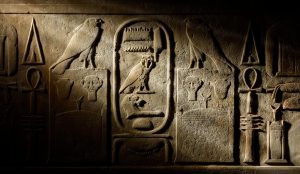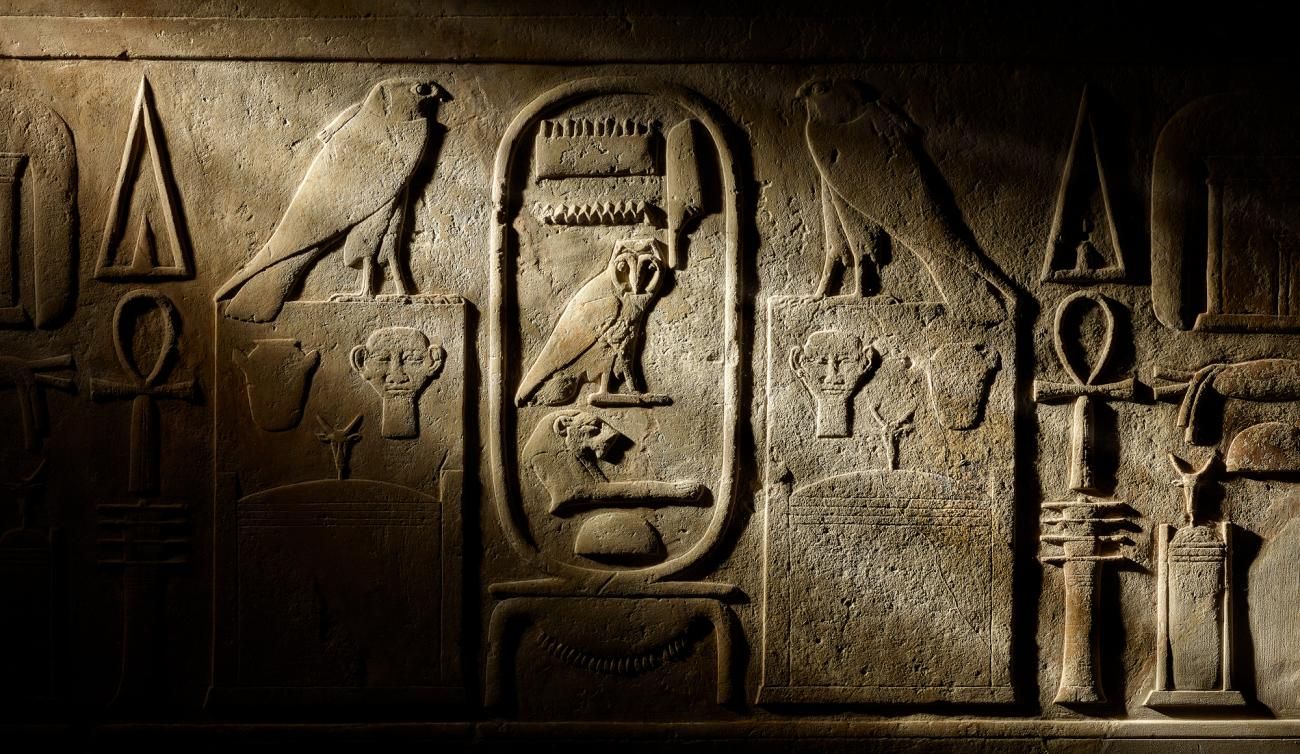When I was a child, I was fascinated by the ancient wonders of Egypt. The pyramids, the mummies, and the vast desert that stretched into eternity – it was a world completely different from my own. But what truly captivated my imagination were the beautifully intricate hieroglyphs adorned on the walls of temples and tombs. Those mysterious symbols seemed to hold the secrets of a lost civilization – a language lost in time. Now, as an adult, my passion for Egyptology has only grown, and I find myself on a journey to uncover the mysteries of Egyptian hieroglyphs.

Hieroglyphs, meaning “sacred carvings,” were the writing system used by the ancient Egyptians for thousands of years. They first appeared around 3000 BC and continued to be used until the fourth century AD, making them one of the oldest known writing systems in the world. Each symbol represented a word or a sound, and they were typically carved or painted onto various surfaces such as tomb walls, papyrus scrolls, and temple facades.
Deciphering the meaning behind these ancient symbols was no easy task. It wasn’t until the early 19th century that a breakthrough in understanding occurred. French scholar Jean-François Champollion became the first person to successfully decipher Egyptian hieroglyphs, opening up a whole new world of knowledge about ancient Egypt.
Champollion’s key to unlocking the hieroglyphic code was the Rosetta Stone, an ancient artifact discovered in 1799. The Rosetta Stone contains inscriptions in three different scripts: Greek, Egyptian hieroglyphs, and Demotic (a simplified form of hieroglyphs used for everyday purposes). By comparing the Greek text, which was already known, with the hieroglyphs and Demotic, Champollion was able to make connections between the scripts and begin to unravel the meaning of the ancient symbols.
One of the most fascinating aspects of hieroglyphs is their versatility. They could be read both horizontally and vertically, and the direction in which they were read depended on which way the symbols were facing. Additionally, hieroglyphs could either represent the actual object they depicted, known as logographs, or they could represent the sound of the object, known as phonograms.
The logographs were often used to represent important words or names, such as the name of a pharaoh or a god. For example, the symbol of a falcon represented the god Horus, while the symbol of a throne represented the pharaoh. These logographs were accompanied by phonograms, which helped to clarify the pronunciation of the word. This combination of logographs and phonograms allowed for a more comprehensive understanding of the hieroglyphic texts.
Another fascinating aspect of Egyptian hieroglyphs is their ability to convey multiple meanings. Some symbols had a primary meaning but could also be used in a secondary or metaphoric sense. For example, the symbol of an eye represented the organ of sight but could also symbolize perception or knowledge. This layering of meanings added depth and complexity to the hieroglyphic texts and allowed the ancient Egyptians to express abstract concepts in a visually rich way.
While the Rosetta Stone provided a valuable starting point for scholars like Champollion, it was only the beginning of the journey to unlock the full complexity of the hieroglyphic script. Over the years, countless inscriptions, texts, and manuscripts have been discovered, shedding further light on the nuances of the language.
One such breakthrough came with the discovery of the tomb of Tutankhamun in 1922. The walls of his burial chamber were adorned with beautiful hieroglyphs, providing a treasure trove of information about the religious beliefs and rituals of ancient Egypt. These inscriptions, along with many others, have helped to expand our understanding of hieroglyphs beyond just a means of communication, revealing them as a gateway into the religious, cultural, and social aspects of Egyptian society.
In recent decades, new technologies have further expanded our knowledge of hieroglyphs. Advanced imaging techniques, such as multispectral imaging and reflectance transformation imaging, have allowed us to digitally enhance and analyze hieroglyphic inscriptions that had previously been illegible or damaged. These technological advancements have opened up new avenues for research and have provided invaluable insights into the intricacies of the ancient scripts.
Studying Egyptian hieroglyphs is like peering through a keyhole into another world. It is an art, a science, and a historical adventure all rolled into one. Each symbol tells a story, and with every discovery, we inch closer to piecing together the puzzle of ancient Egyptian civilization. The beauty and complexity of hieroglyphs continue to inspire awe and wonder, reminding us of the incredible achievements of our ancient ancestors.
So, whether you are an aspiring Egyptologist or simply looking to delve into the mysteries of the past, I urge you to explore the captivating world of Egyptian hieroglyphs. Uncover the secrets, decipher the codes, and immerse yourself in the remarkable legacy of this ancient writing system. Who knows what hidden wonders and untold stories await those who dare to delve into the world of hieroglyphs?











